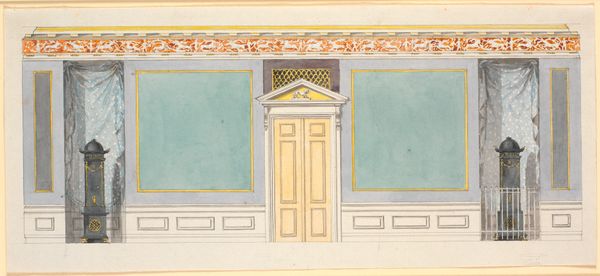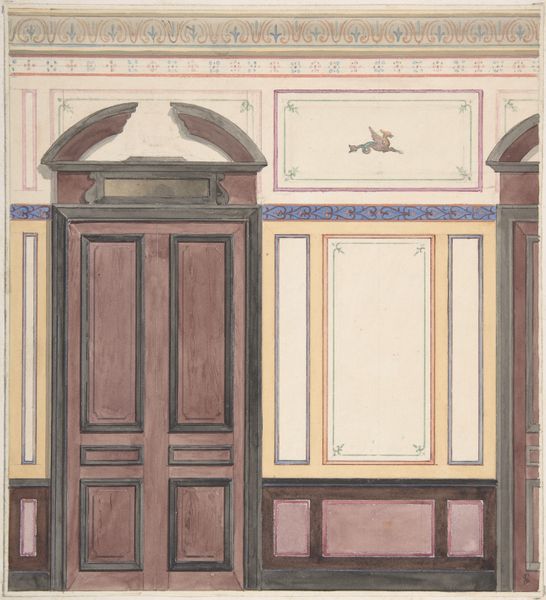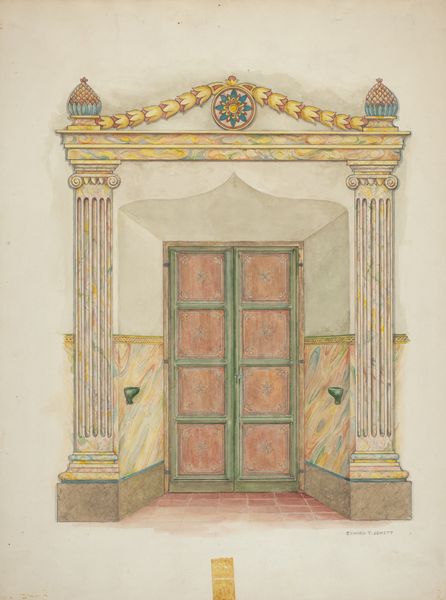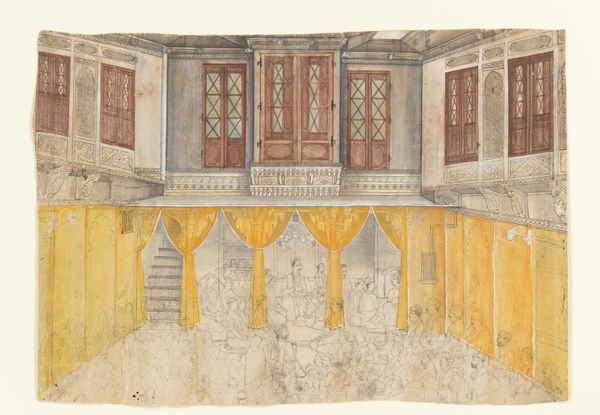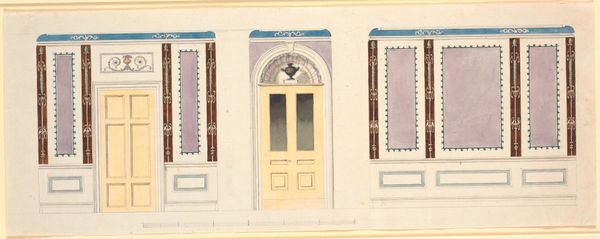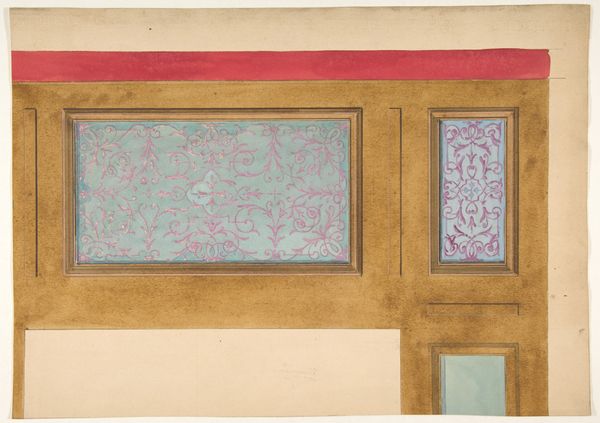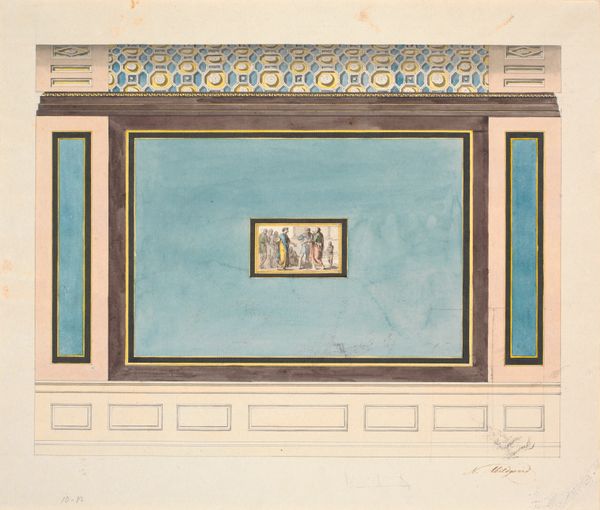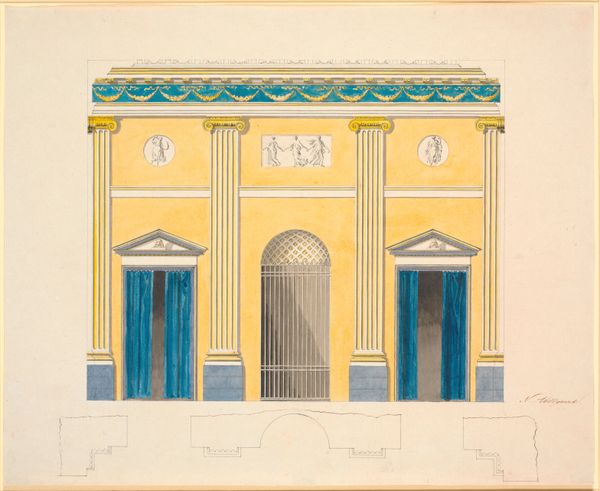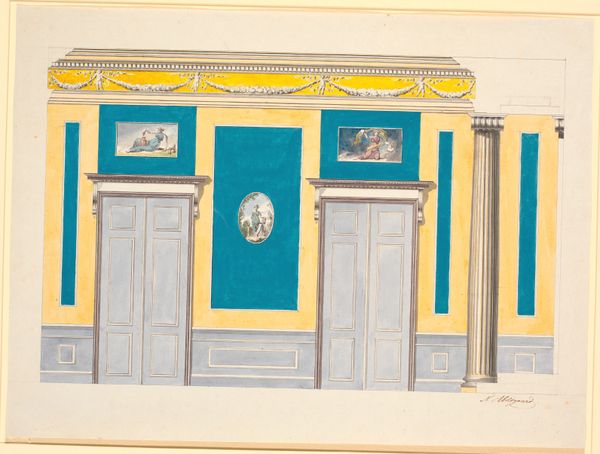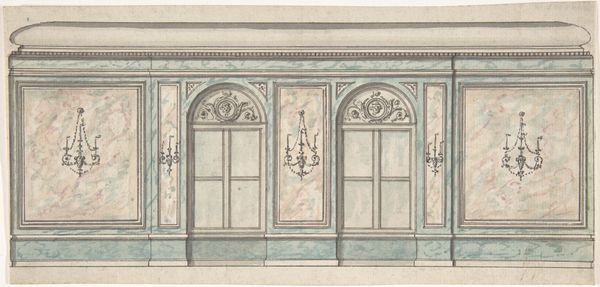
Udkast til dekoration af kortvæg i appartementssalen 1743 - 1809
0:00
0:00
drawing, watercolor, architecture
#
drawing
#
neoclacissism
#
watercolor
#
watercolor
#
architecture
Dimensions: 194 mm (height) x 264 mm (width) (bladmaal)
Curator: This watercolor drawing, held at the SMK—the National Gallery of Denmark—is titled "Sketch for the Decoration of the Map Room in the Apartment Hall." Nicolai Abildgaard created it sometime between 1743 and 1809. Editor: My initial feeling is that it's rather... restrained. The pastel shades and rigid symmetry lend it an air of formal severity, though the warm hues in the frieze alleviate that a bit. What strikes you first? Curator: The clear echoes of neoclassicism—the emphasis on order, the architectural rendering, the classical ornamentation. These all evoke a desire to reconnect with a supposedly purer past, before revolution and social upheaval. It’s about restoring order, visually and ideologically. Editor: I’m drawn to the interplay of vertical and horizontal lines. Notice how Abildgaard segments the space with meticulous regularity. The pilasters, the cornices, even the door panels contribute to this grid-like structure. What’s fascinating is the contrast between this underlying structure and the more fluid ornamentation. Curator: Precisely! The ornamentation, specifically the floral frieze at the top, acts as a visual memory device. Its recurring patterns and motifs aren't merely decorative. They tie into the ancient, mythic narratives—the cyclical stories societies use to understand time and experience. It subtly integrates an awareness of tradition with a forward-looking aspiration. Editor: So, the ornamentation provides a counterpoint, suggesting that while structure is paramount, feeling is equally important. It's not merely a decorative addition, but rather a symbolic commentary woven into the architectural whole. I wonder if Abildgaard intended that soft, aqueous blue in the central panel as a grounding feature. Curator: I believe he absolutely did. Its stark presence emphasizes a lack or a void. As such, I interpret it not merely as a decorative touch but as an allusion, representing absence—something yet to be filled. It's the suggestion of possibility. Editor: Indeed! I hadn’t considered it from that angle, but the composition’s rigor truly enhances that potential reading. A fascinating confluence of constraint and openness. Curator: It does prompt us to ponder how environments can both shape and reflect the people who inhabit them, linking individual experience to broader historical currents. Editor: And, perhaps how architectural sketches, ostensibly technical documents, reveal the profound artistic, and ideological, commitments embedded in a particular historical moment.
Comments
No comments
Be the first to comment and join the conversation on the ultimate creative platform.

